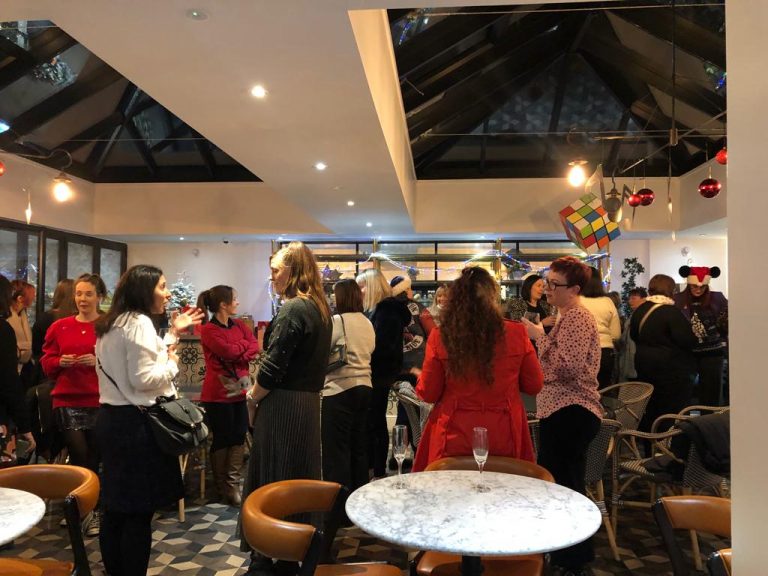Personalisation in email marketing is a powerful tool. In a time where we are overloaded with information standing out from the crowd has never been more important.
We are constantly bombarded with marketing messages, many of which we haven’t even asked for! When was the last time you scrolled through your social feed only to be hit with a dozen or more sponsored posts. Or had your Spotify playlist interrupted with an advert for some terrible music you’re not interested in?
I’ve said it before and I’ll say it again, email marketing is a fantastic way of reaching your ideal audience. But if you’re looking to use it as an effective marketing strategy for your business, you need to do a little bit more than: write email – send email. In order to cut through the noise and get your emails noticed, you should be thinking about personalising your messages.
What is personalisation?
Personalisation is so much more than adding the recipient’s name to your email.
Don’t get me wrong, I love this simple tool, especially when it’s popped into the body of the email rather than just as a greeting. We all know that it’s a bit of tech trickery, but it doesn’t hurt see your name in a sentence does it {name}?
So if it isn’t adding a persons name into the body of the email, then what is it?
Personalisation is tailoring your email content to the individual so that it meets their needs and preferences. Doing this can result in higher engagement, increased conversions, and ultimately, stronger connections with your audience.
Studies have shown that personalised emails have open rates that are up to 26% higher and click-through rates are up to 19% higher than non-personalised emails. They can also help you increase sales by up to 13%. That’s not to be sniffed at!
Here are a few ways you can personalise your email campaigns
- Use the recipient’s name (as already mentioned).
- Use location data. If you know where your subscriber is located, you can send them content that is relevant to their area.
- Use purchase history. If they have bought from you in the past, use this to your advantage, send them content that is related to their interests.
- Use other relevant information. You can also use other information, such as age, birthday or interests, to personaliseyour emails.
How can you use it?
Here are a few examples of how you can use personalisation in your emails.
Welcome emails & automations:
Welcome emails provide a fantastic opportunity to personalise your message by using an individual’s name and anything else you know about them. You can use the email(s) to introduce yourself, provide information about what you do and what you offer, share your expertise, show you understand their pain points and ultimately ask for the sale.
Location suggestions:
If you host in-person events or courses, it may be worth collecting location information at sign up. This way you know exactly which events are relevant to who. But do remember people will travel for a fabulous event. I used to make a 3hr+ hour round trip for networking with MPWR Business Club when I moved out of York.

Product or service recommendations:
If you know what someone has bought from you in the past, or what ‘freebie’ they signed up for you can send them recommendations. This strategy works well for cross-selling and up-selling. You can also use it for any affiliated programmes you are part of – just be sure to be super clear that it is an affiliated product or service.
Birthday emails:
Know their birthday? Why not send a birthday message or offer? It’s a great way to show your appreciation and encourage them work with you. I admit to heading to Pizza Express on more than one occasion to get my free bottle of birthday Prosecco and then spend £40 odd on dinner and beer!
When asking for additional information at sign-up, be clear on why you are asking for it and ONLY ask for it if it’s relevant. I suggest making any additional fields optional so that if someone doesn’t want to share their town/birthday with you, they don’t have to.
TLDR:
In a time where we are overloaded with information and time poor, standing out from the crowd and getting your emails noticed is really important. Personalisation is an essential tool and by tailoring your message to certain groups in your list you can be really targeted in your approach. With open rates up to 26% higher and click-through rates up to 19% higher than non-personalised emails, I suggest this isn’t too long and perhaps you should read!
And if you’re looking for support and advice with your emails, why not check out my services page just here: email marketing packages
“The most important things in life are the connections you make with others.”
Tom Ford
Enjoying the blog?
If you found this useful and would like to have content like this dropping into your inbox twice a month, then sign up using the big shiny button below!